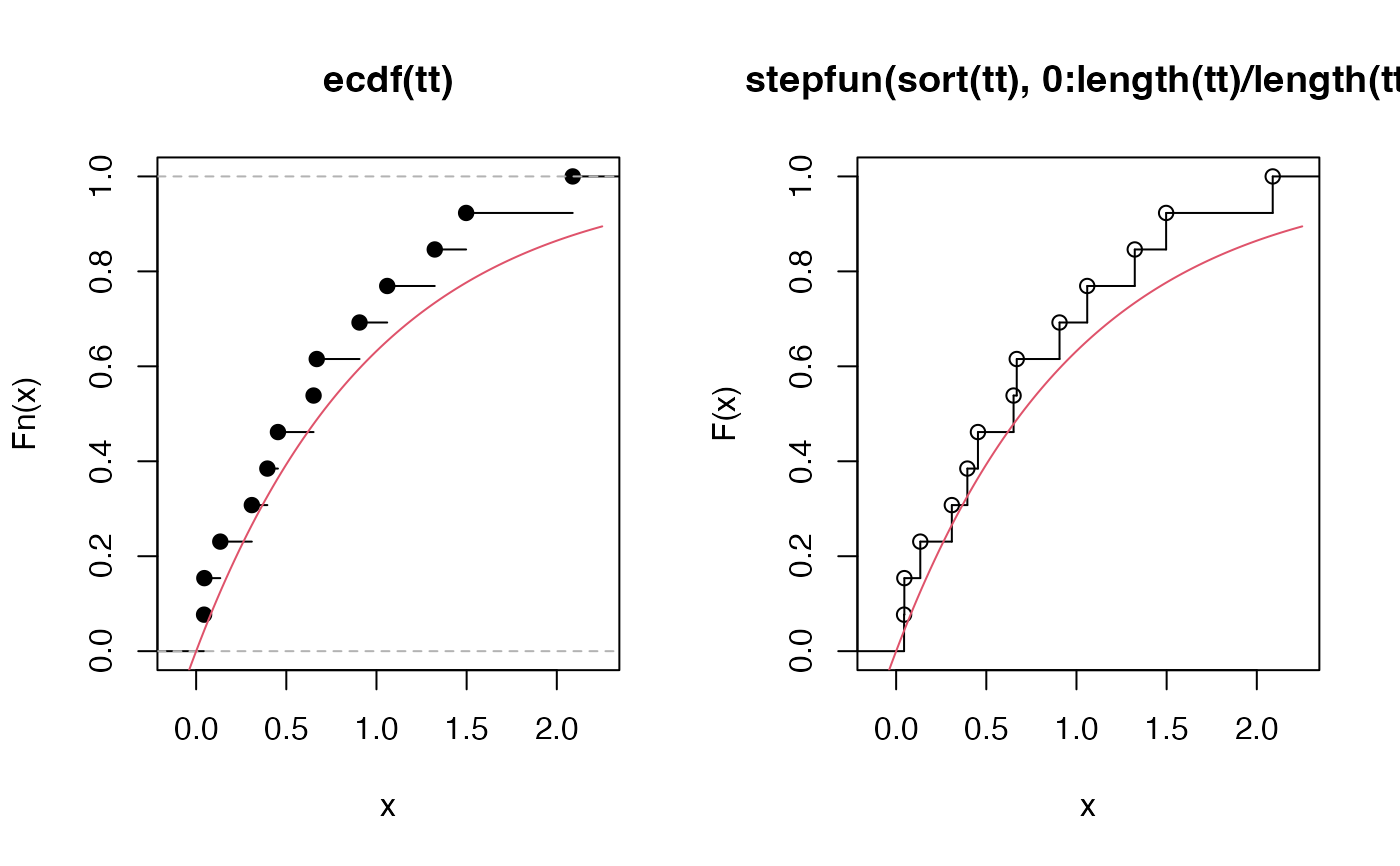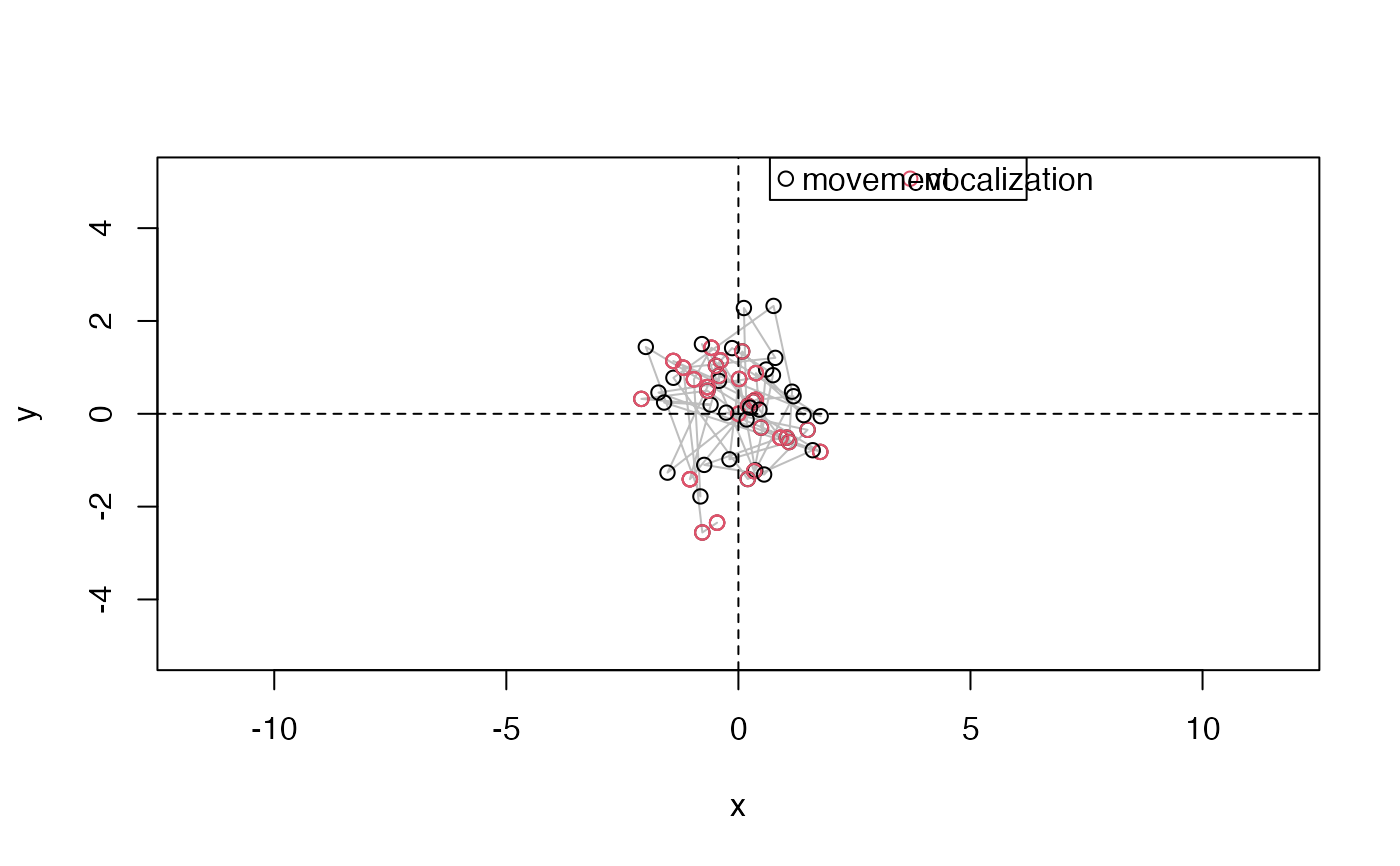Event time simulator
events.Rdtimetoevent turns exponential wait times to time-to-event data
within a desired duration, it handles 0 and infinite rates in a robust manner.
events simulates event times based on an exponential time-to-event
distribution.
Usage
timetoevent(rate, duration)
events(vocal_rate = 1, move_rate = 1, duration = 10,
movement = 0, avoid = c(0, 0))Arguments
- rate
rate for the exponential distribution (
rexp).- duration
total time duration to consider (in minutes).
- vocal_rate
vocal rate for exponential distribution (
rexp), how often a vocal event happens per minute.- move_rate
movement rate for exponential distribution (
rexp), how often a movement event happens per minute.- movement
standard deviation for a bivariate Normal kernel to simulate locations centered at the nest location.
- avoid
range along the x axis to avoid with respect to movement locations, i.e. location for a movement event within this interval will be rejected and a new location drawn.
Value
An events object data frame with coordinates (x, y; centered at 0 that is nest location), event times (t) and indicator for vocal events (v).
Examples
timetoevent(0, 10)
#> numeric(0)
timetoevent(Inf, 10)
#> [1] 0
rr <- 1
tt <- timetoevent(rr, 10)
op <- par(mfrow=c(1,2))
plot(ecdf(tt))
curve(1-exp(-rr*x), add=TRUE, col=2) # cdf
plot(stepfun(sort(tt), 0:length(tt)/length(tt)), ylab="F(x)")
curve(1-exp(-rr*x), add=TRUE, col=2) # cdf
 par(op)
e <- events(movement=1, duration=60)
mx <- max(abs(e[,1:2]))
plot(e[,1:2], col="grey", type="l", asp=1,
xlim=2*c(-mx, mx), ylim=2*c(-mx, mx))
points(e[,1:2], col=e$v+1)
abline(h=0, v=0, lty=2)
legend("topright", pch=21, col=1:2, horiz=TRUE,
legend=c("movement", "vocalization"))
par(op)
e <- events(movement=1, duration=60)
mx <- max(abs(e[,1:2]))
plot(e[,1:2], col="grey", type="l", asp=1,
xlim=2*c(-mx, mx), ylim=2*c(-mx, mx))
points(e[,1:2], col=e$v+1)
abline(h=0, v=0, lty=2)
legend("topright", pch=21, col=1:2, horiz=TRUE,
legend=c("movement", "vocalization"))
